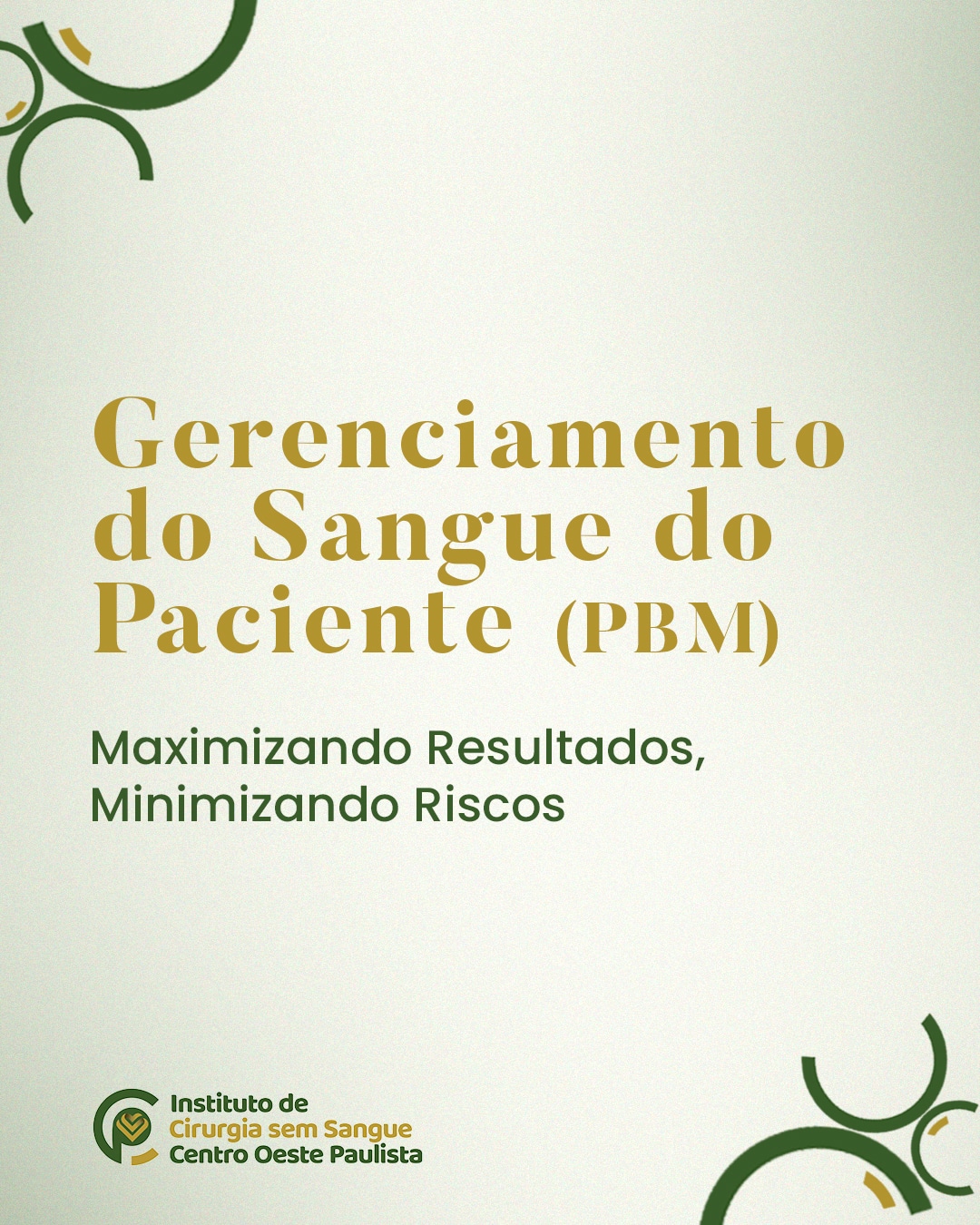Managing the patient’s blood and hematopoietic system is akin to managing any other organ and organ system during patient care. Specialists oversee the heart, kidneys, endocrine system, etc., and the patient’s blood requires similar clinical attention. The hematopoietic system and its circulatory products are fundamental to the healthy functioning of the human body. In simple terms, Patient Blood Management (PBM) is an organized, patient-centered approach in which the entire healthcare team coordinates efforts to improve outcomes by managing and preserving the patient’s own blood. By reducing reliance on blood transfusions, PBM aims to enhance clinical outcomes, reduce the risks and costs associated with transfusions, and improve patient care safety and quality. Essentially, the concept of PBM concerns holistic management and preservation of the patient’s own blood in the medical and surgical context.
Definition It is well-known that the term Patient Blood Management (PBM) was originally proposed in 2005 by James Isbister at a meeting of the board of the Society for the Advancement of Blood Management and first appeared in the literature in 2008. However, long before that, there was a concept of Patient Blood Management (PBM); we can say it began to be structured by the renowned cardiac surgeon Dr. Denton Cooley. Dr. Cooley, recognized as “the father of bloodless surgery,” pioneered open-heart surgeries without blood transfusion at the Texas Heart Institute in the early 1960s. At that time, these surgeries regularly consumed dozens of units of blood to fill the heart-lung machine circuit and during the procedure itself.
Patients who refused blood transfusions and sought a “bloodless” approach turned to Cooley for surgery. He felt these patients needed to be cared for like any other, and thus he developed a different approach, ‘another path,’ to manage their treatment. This involved three basic steps that would later be described as the three pillars of PBM. This was indeed the beginning of a new approach to surgical patient care. Instead of simply relying on blood transfusion from others, this approach focused on preserving and managing the patient’s own blood.
Currently, PBM is defined as a “patient-centered, systematic, evidence-based approach to improve patient outcomes by managing and preserving the patient’s own blood while promoting patient safety and empowerment.” PBM involves timely and multidisciplinary application of evidence-based medical and surgical concepts with the goal of: 1) screening patients for appropriate diagnosis and treatment of anemia; 2) minimizing surgical, procedural, and iatrogenic blood loss and managing bleeding related to coagulopathies; and 3) increasing patient anemia tolerance while appropriate treatment is initiated. This definition also emphasizes the critical role of informed patient choice.
The aim of PBM is not limited to reducing blood transfusions per se. Instead of transfusions being the standard based on a specific hemoglobin concentration, PBM focuses on the importance of the patient’s own blood as a unique and valuable natural resource that should be conserved and managed appropriately. Therefore, a reduction in the number of transfusions is a natural consequence of the direct implementation of PBM. Adherence to the principles of judicious blood use, i.e., transfusions indicated at the lowest dose necessary to maintain a certain laboratory hemoglobin value, helps minimize transfusion. However, such programs, designed to reduce transfusions, have a narrow focus compared to the broader clinical approach of PBM.
Once the concept and importance of PBM are understood, it is necessary to find an effective way to implement the approach in hospitals and medical services, including outpatient services. All sectors of healthcare must align with the proposals and objectives of PBM. This topic will be addressed in a subsequent article of this Consensus entitled “Implementation of Patient Blood Management.”
Recommendation For successful PBM implementation, a multidisciplinary approach involving professionals from different areas, including physicians, surgeons, anesthesiologists, hematologists, as well as other professionals, is necessary. Education and awareness of PBM guidelines are essential to ensure its adoption and effectiveness.
PBM adopts an individualized and multidisciplinary approach to manage a patient’s blood through the assessment and development of a management plan to optimize the patient’s own blood (identifying and correcting conditions such as anemia and iron deficiency), minimize blood loss (such as surgical techniques that reduce blood loss), and optimize anemia tolerance.
This approach should be the standard of care applied by all clinicians for patients undergoing medical or surgical interventions with a high risk of significant blood loss. The best and safest blood for patients is their own circulating blood.
Special Article: Consensus of the Brazilian Association of Hematology, Hemotherapy, and Cellular Therapy on Patient Blood Management
Juan Carlos Montano-Pedroso (a,b), Maria Cristina Martins de Almeida Macedo (c,d), Silvana Biagini (e), Glaciano Ribeiro (f,g), José Francisco Comenalli Marques Junior (h), Silvia Renata Cornélio Parolin Rizzo (i)*, Guilherme Rabello (j), Dante Mario Langhi Junior (k)
Federal University of São Paulo (Unifesp), São Paulo, SP, Brazil ~ Medical Care Institute of the State Civil Servants (Iamspe), São Paulo, SP, Brazil ~ Brazilian Cancer Control Institute (IBCC), São Paulo, SP, Brazil ~ Hospital São Camilo Pompéia, São Paulo, SP, Brazil ~ Guilherme Álvaro Hospital and Estivadores Hospital Complex, Santos, SP, Brazil ~ University Hospital of the Federal University of Minas Gerais (HC UFMG), Belo Horizonte, MG, Brazil HHEMO Group, São Paulo, SP, Brazil ~ Vera Cruz Hospital, Campinas, SP, Brazil Brazilian Association of Hematology, Hemotherapy, and Cellular Therapy (ABHH), São Paulo, SP, Brazil ~ Heart Institute of the Hospital das Clínicas, Faculty of Medicine, University of São Paulo (Incor – HCFMUSP), São Paulo, SP, Brazil ~ Paulista School of Medicine, Federal University of São Paulo (EPM UNIFESP), São Paulo, SP, Brazil


